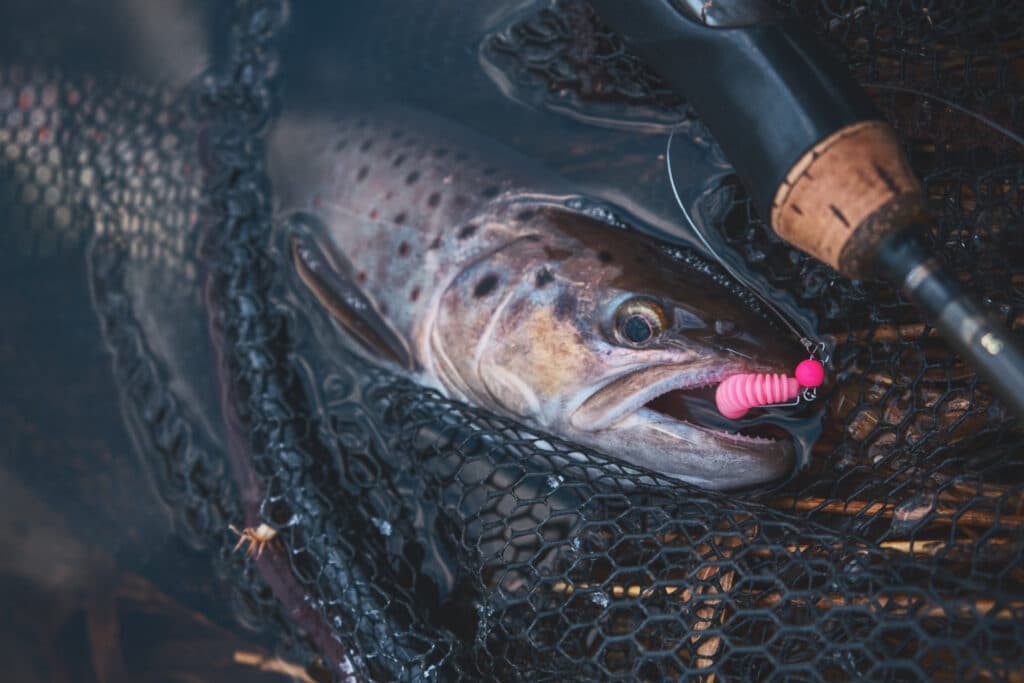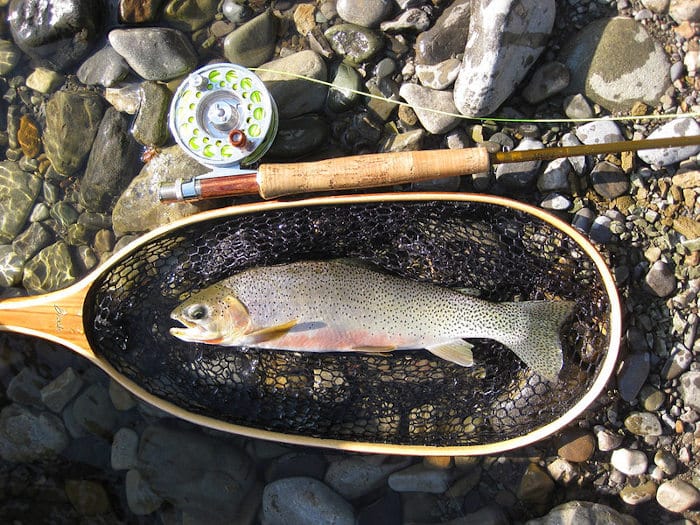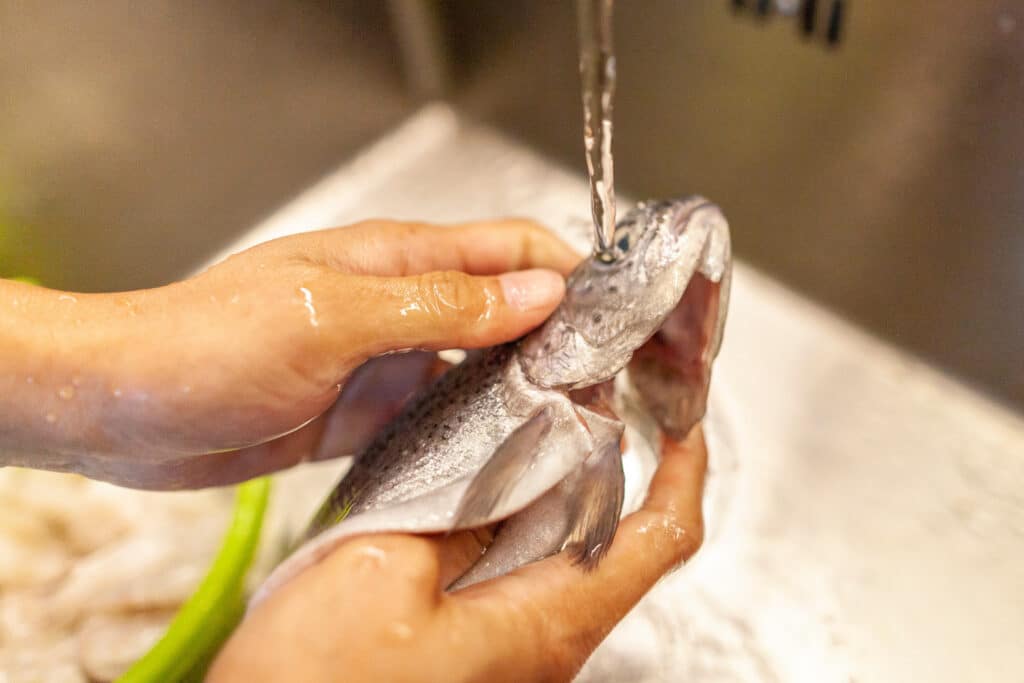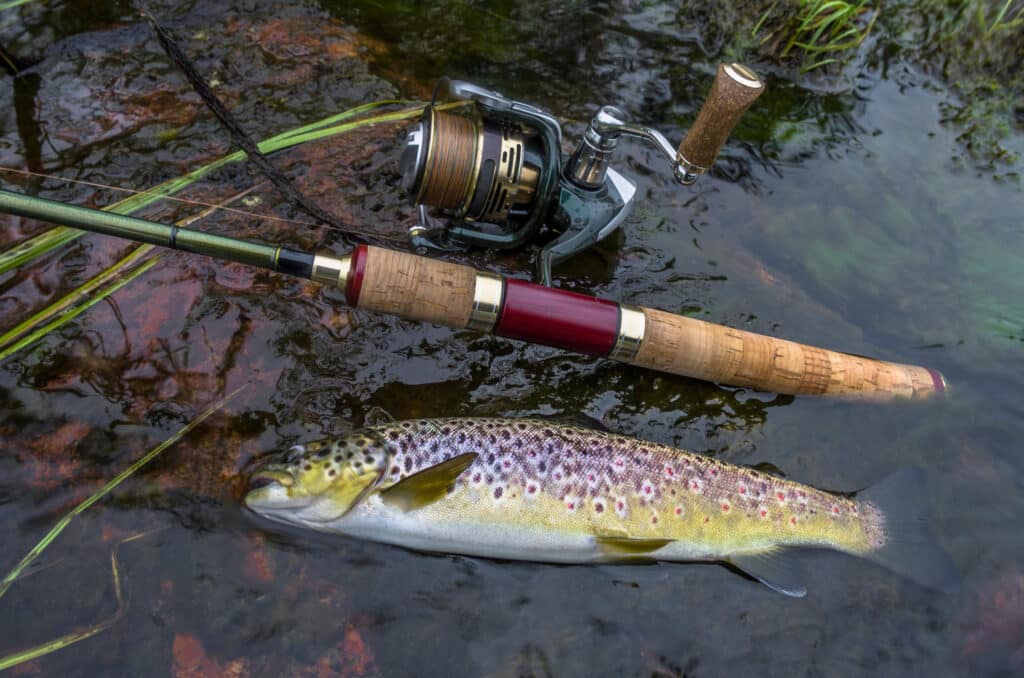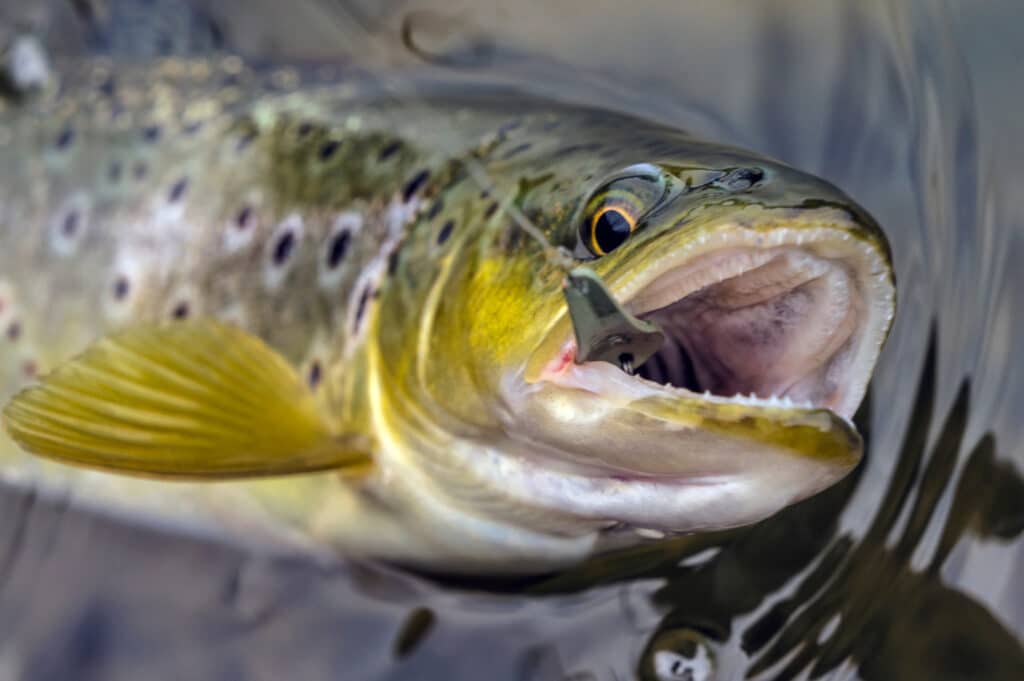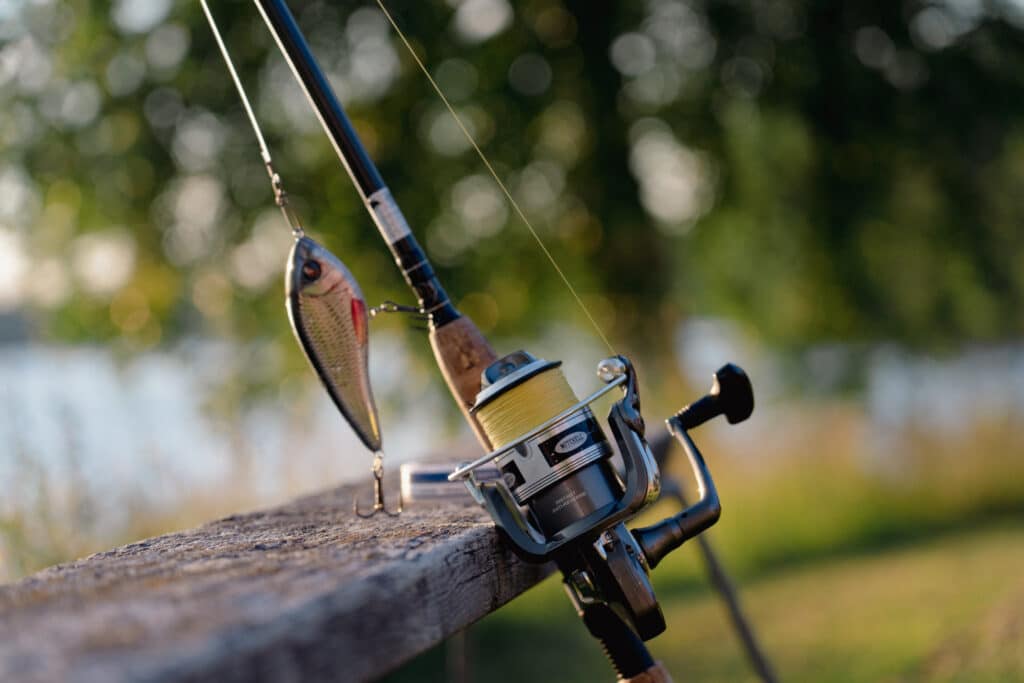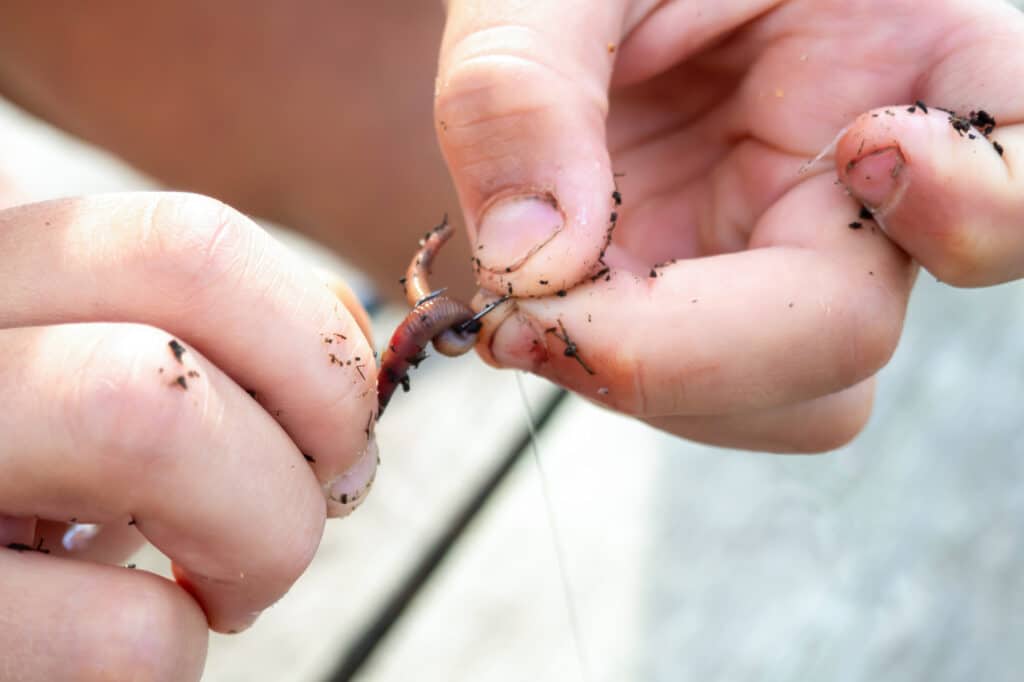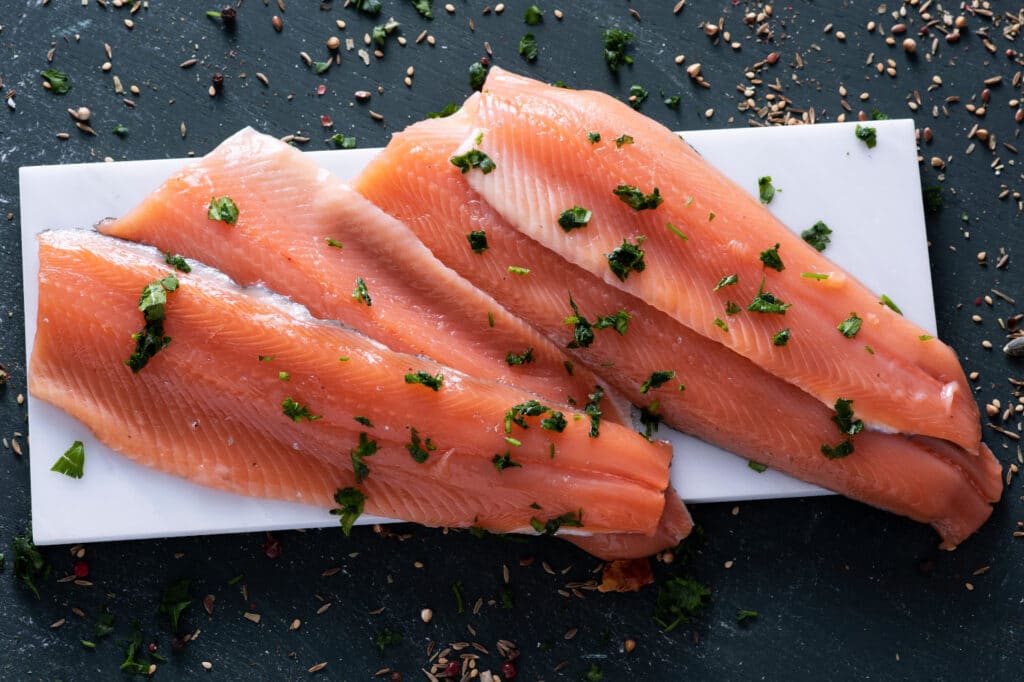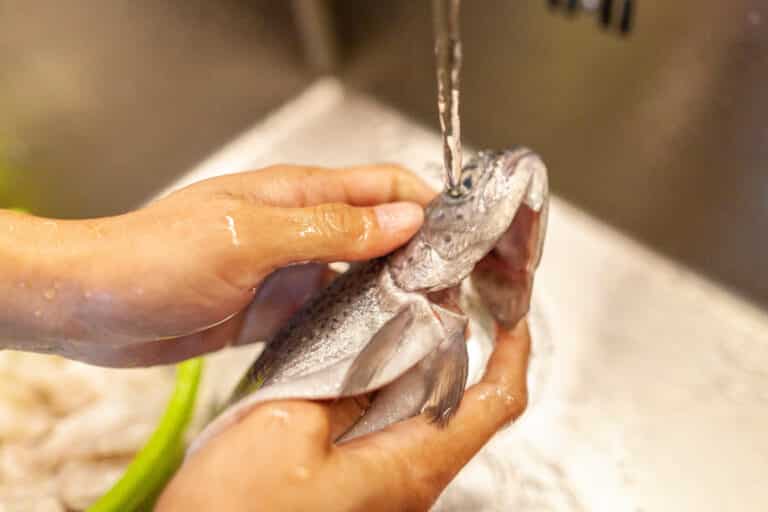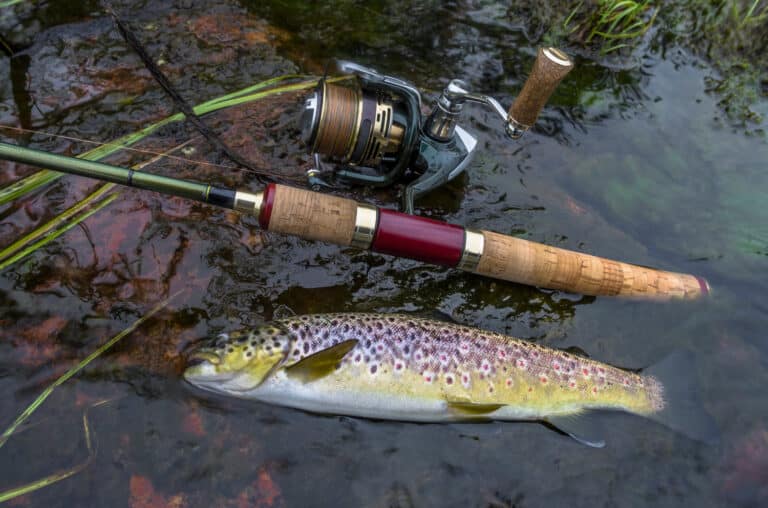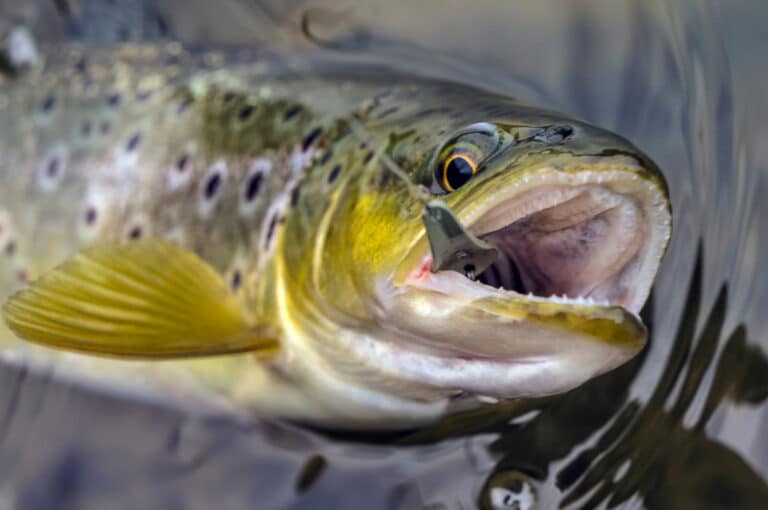If you’ve already read my post on the best trout baits, then you’ll know that I think the humble worm is the overall best bait for trout. It’s time-tested, works in just about every environment, and there’s something about worms that trout can’t resist.
But while fishing with worms is always reliable, there are plenty of different ways to do it. You can use live worms or soft plastic ones, scent or no scent, and the way you rig it might depend on whether you’ll be bottom bouncing or float fishing. Different situations demand different techniques, and in this article, I’m going to dive deep into everything there is to know about worm fishing for trout.
You’re probably always going to catch at least a few fish with worms, but with the right techniques, you’ll know exactly what to use and when, and that’ll put more fish in your cooler. Read on for the lowdown, or use the table of contents to find what you need.
The Wild Provides is a participant in the Amazon Affiliate program. If you click through one of the links on this site and make a purchase, we may receive a small commission at no extra cost to you. It helps to keep us up and running, but all recommendations are my own honest opinions.
Why Do Trout Like Worms?
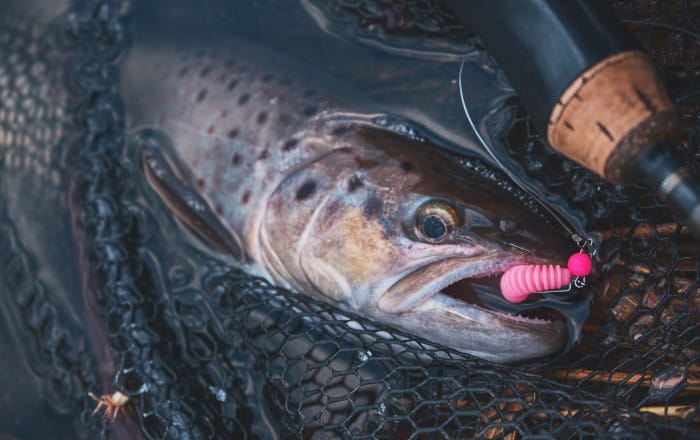
Before I get into the worm fishing tips, I want to go over what it is that makes worms a great trout bait to begin with. Knowing what they like and why they like it will help you understand how to adjust for different situations.
Trout, especially wild trout, are primarily insect-eaters. Sometimes those insects are big, winged mayflies eaten off the surface, but most of them are insects in their larval stage underwater. Many of these larval insects look a lot like worms; small, wriggling, defenseless grubs that provide a trout with an easy meal. Worms also have a near-perfect neutral buoyancy that gives them a natural, insect-like look in the water.
Earthworms or red wigglers aren’t a particularly abundant natural trout food source in the wild, but they look and smell so much like insect larvae that the trout don’t really care. On top of that, trout also love leeches in the wild, and leeches look very similar to worms when wriggling through the water.
The important thing to keep in mind is that many of the worms we buy for trout bait are much bigger meals than anything they would see in the wild. You might get a lunker brown trout with a full-sized nightcrawler, but most trout will be too intimidated by something that size. Instead, cut down your worms to sizes that are big enough to be an enticing meal, but not so big that they look unnatural (somewhere between 2-6 inches).
Trout Fishing With Live Worms
Since modern fishing equipment came onto the scene, more fish have probably been caught with a nightcrawler under a red and white bobber than any other method. That’s because it reliably catches fish, but refining your tactics beyond the classic method can up your game and get you more trout in the long run.
Tip #1: Use Big Worms After Heavy Rain
You can catch trout with worms at any time of year, but when the worms come out after heavy spring rains is the best time to go big. This is the time when local trout are actively seeing and eating real worms, so you should use that to your advantage.
Spring rains get the water moving fast, so bottom bouncing or “drift fishing” usually provides a more natural look than bobber fishing. Adjust your worm size to the fish; if you’re steelhead fishing, you can use 6 inches or more of worm. But if you’re fishing for 12-inch rainbows in a small creek, cut your worms down to roughly 2-4 inches long.
One more important thing to note is that the muddier the water, the bigger your worm should be. Not all trout will commit to a big offering, but going too small in dirty water makes it impossible for the trout to see.
Tip #2: Rig Your Worm The Right Way
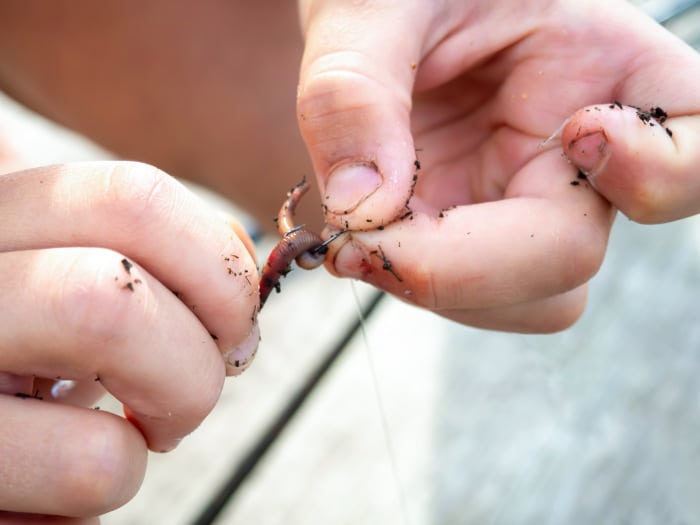
Time and again, I see people obsess over their setup only to spend 2 seconds crumpling the worm into a ball on the hook and calling it good. This is a mistake, as it eliminates the natural wiggling action that trout love in the first place.
To give your worm the best presentation, start with the right hooks. Hook size will depend on the local fish (size 2-4 for steelhead-sized fish, size 4-8 for rainbows and cutthroats), but using a good baitholder hook (like these from Gamakatsu) helps keep a live worm in place.
From there you have 2 choices. You can thread the worm all the way up the hook, which looks great but tends to slip off easily. My preferred method is to pierce the worm all the way through near one end, sliding it all the way up to the eye of the hook. Then repeat 2-3 times to create a wrapping effect, leaving roughly half of the worm dangling off the end. This method hides the hook and secures the worm, but allows the worm to still look natural in the water.
Tip #3: Perfect Your Cast
One of the hardest parts of worm fishing is actually keeping the worm on the hook, and that starts with a good cast. Even the most secure worms will get dislodged with a powerful cast, and that’ll ruin your presentation.
Perfecting the lob cast is the way to go. It takes practice to be able to lob your bait to where you want it, but a good lob reduces the amount of force at the end of the line and keeps the worm in place.
The key to a good lob cast is to let the rod do all the work. Start by letting out 2-3 feet of line from the tip of your rod. Then drop the rod tip slowly, letting the tip load up. When it’s loaded, swing the rod in a smooth, fluid motion and release high, giving your bait a high arc.
Types Of Live Worms For Trout
The nightcrawler may be a gas station favorite, but there are actually a few different types of worms that work well for trout fishing. Each has it’s own advantages, so depending on where you’re fishing, one might be better than the rest.
Nightcrawlers
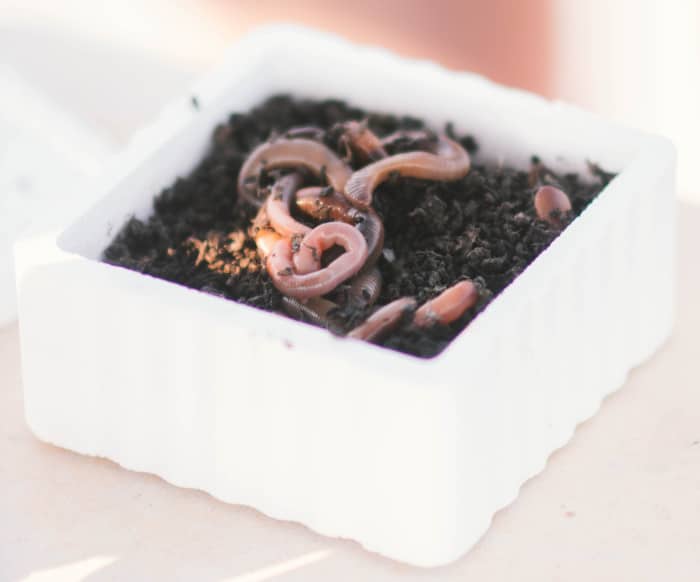
Nightcrawlers are classic earthworms, the kind you see at bait shops and gas stations across the country. They tend to be long and fat, and a full-sized nightcrawler is almost always too big for trout fishing.
When you use nightcrawlers, it’s usually best to cut them down to 2-6 inches, depending on the size of the water and the size of the fish. But one advantage of nightcrawlers is that when the water is big and/or dirty, you can go bigger to make sure to attract the attention of more fish.
Red Wigglers
Red wigglers are harder to find than nightcrawlers, but these can be absolutely killer trout worms. They’re much smaller than nightcrawlers, making them best for smaller creeks and clearer water. But they’re also incredibly lively (earning them their “wiggler” name), which is irresistible to trout.
Mealworms
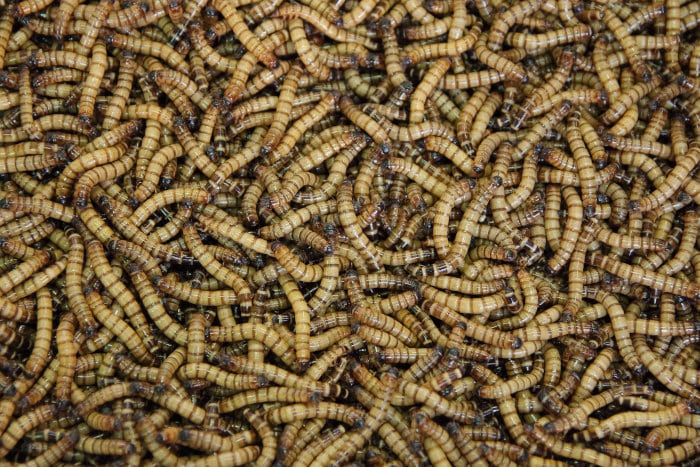
Mealworms aren’t actually worms, but are instead the larval form of a beetle. Because trout eat mostly insect larvae in nature, mealworms look identical to their most natural food source and can be super effective for wary trout.
The thing about mealworms is that they’re tiny, so they aren’t going to be very effective for steelhead or big browns. But when you’re hunting brookies in low, clear, water, the authenticity of a mealworm or two can be the ticket to enticing them.
Fishing For Trout With Plastic Worms
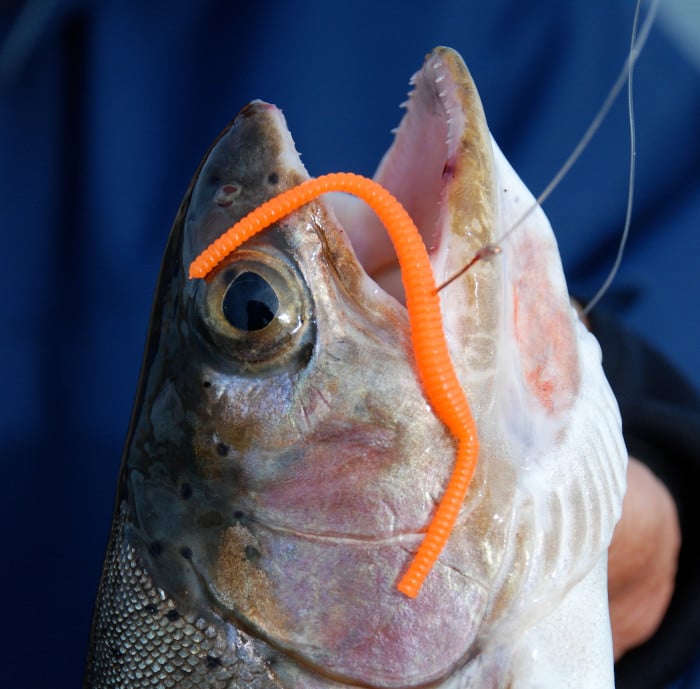
Live worms are the classic trout bait, but plastic worms can be just as effective if not more. This is especially true for steelhead, who seem to love big, bright baits. But little brook trout love plastic worms too, and the success of the simple Trout Magnet shows that (you can get the full Trout Magnet kit here; it’s one of my favorite trout lures).
There are a couple of advantages to fishing with plastic worms. The first is that plastic worms stay on the hook much better than live ones, so you don’t have to worry as much about how you rig it or how you cast. That allows you to spend more time fishing and less time fiddling with bait.
The second is that plastic worms come in every color imaginable. Sometimes the natural look is best, but often a bright pink worm will outfish a natural one all day long. Trout love shiny things, and plastic worms let you take advantage of that.
The third major advantage is that it’s just easier to dial in your setup. You can keep a variety of sizes and colors on hand, and when you catch a trout, you’ll know exactly what size and color you caught it on. Then when you encounter similar conditions next time, you’ll know exactly which worm to try first.
With that said, here are a few plastic worm fishing tips.
Tip #1: Use The Right Hooks
Fishing with live worms requires a good baitholder, but soft plastic worms give you more freedom in choosing your hook. Choosing a good hook gives you better hooksets, and will help you land more of the fish you hook into.
My go-to trout hook for plastic worms is the Gamakatsu octopus hook. Octopus hooks are shorter, allowing you to hide them better, and the wide gap and offset shank give you the optimal angle when setting the hook.
Octopus hooks are my go-to, but I also love the VMC Techset and Gamakatsu Offset Worm Hook in sizes between 4 and 8.
Tip #2: Use The Right Colors
One of the major advantages of artificial worms is the color selection, but you need to use the right ones to be effective. Trout are typically most attracted to pinks and oranges, so in clear water, variations of those colors are the best bet. These pink steelhead worms from Mad River are some of my all-time favorites.
In dirty or deep water, contrast is more important than a specific color. Bright pink can still work, but it’s also worth trying colors like black, blue, or dark green, to enhance visibility in low light.
Tip #3: Take Advantage Of The Wacky Rig
The wacky rig is popular for bass fishing, but it’s a great way to rig plastic worms for trout, too.
The wacky rig (pictured above) is as simple as sticking the point of the hook straight through the middle of the worm, letting it dangle on both sides of the hook. This allows the entire length of the worm to interact with the water in a natural way, and trout won’t be able to resist.
Tip #4: Utilize Scents To Attract Trout
One of the advantages of a live worm is that dirt and natural oils are pretty good at hiding your human scent. But plastic worms will pick up the oils from your hands, and that scent can be enough to spook wary trout.
When I use plastic worms, I almost always use some kind of scent, if for no other reason than to hide my own. I wrote a whole post on fishing with anise oil (which has debatable advantages), but what I really prefer is amino-acid-rich water-based scents. I’m partial to Smelly Jelly because it’s easy to apply and doesn’t leak in my tackle box, but Pautzkes Fire Gel or Atlas Mike’s Lunker Gel are great options also. They’re all easy to use and come in tons of fishy scents. For salmon and steelhead I’ll use sand shrimp or bloody tuna, and for inland rainbows and brookies I’ll use crawfish or garlic.
Worm Fishing Tactics: The Best Presentations For Trout
Worm fishing, whether with live worms or plastic ones, is fundamentally bait fishing. And when fishing with bait, letting the current do the work to provide a natural presentation is key.
The two most popular methods for fishing with worms are bobber fishing (or float fishing) and bottom bouncing (or drift fishing). I should note that in lakes, both of these methods work just as well, too, and letting your bait work with the natural water movement is still the way to fish worms.
Bobber Fishing With Worms
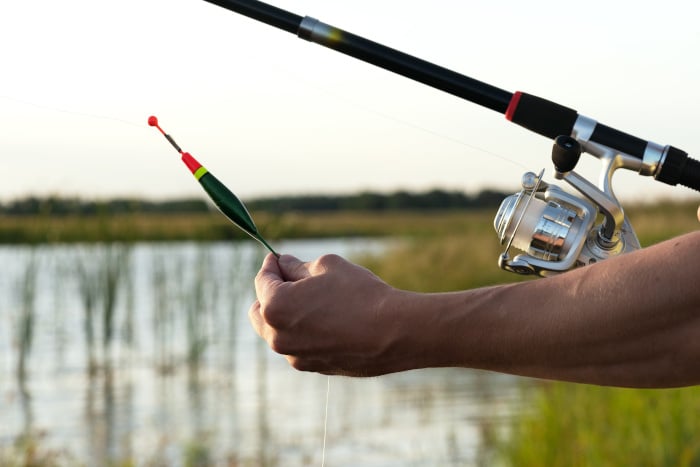
Bobber fishing works best in slower-moving, relatively shallow water. It’s a simple technique and allows you to easily let the current pull your bait along in a natural way.
Knowing the depth of the river is important for bobber fishing, though, because you need your worm to be traveling within a foot or so of the bottom. Using a slip-float works best, so you can adjust your bobber stop (and therefore your leader length) for each area you plan to fish.
For more information on how to rig a slip float for trout, check out this in-depth article from Salt Strong.
But basically, you’ll want to rig your bobber so your leader is roughly the depth of the water. Then add some split shot roughly 12-18 inches from the hook (adding more for faster currents), which keeps your bait near the bottom but lets it float and drift naturally.
Bottom Fishing With Worms
Bottom fishing is another great method that’s also very versatile. You don’t need to know the exact water depth to be effective, as your weight will always put the bait on the bottom.
You still want a natural drift, though, so the key is to use just enough weight to get your bait to the bottom. You don’t want it to stick there; you want the current to naturally bounce your weight along the bottom of the river, taking your bait with it. Faster currents require more weight, and slower currents require less.
The weight should be somewhere between 18 and 24 inches from your hook to allow for natural movement. You might want to go even longer in very clear water to avoid spooking trout with your weight (depending on local regulations). This technique takes a lot of practice to get good at, but it’s a killer method and one of the most effective ways to catch trout with worms.
For a more detailed look at drift fishing and exactly how to rig for it, check out this article. The tips are geared toward salmon and steelhead, but you can easily adapt them to river rainbow trout fishing, too.
Final Thoughts
Worm fishing for trout is about as quintessential as fishing gets. It’s effective, simple, and it just flat-out works. There are plenty of different ways to go about it, and the tactics in this article should help you catch more fish on worms. Good luck and tight lines!

